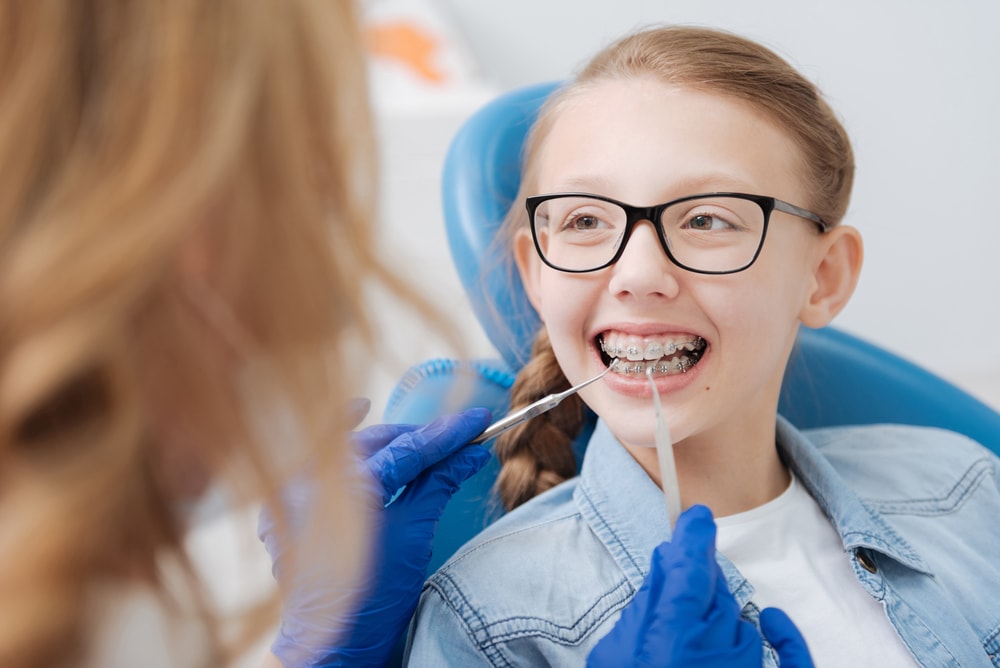Some Of Legacy Orthodontics
Some Of Legacy Orthodontics
Blog Article
The Ultimate Guide To Legacy Orthodontics
Table of ContentsAn Unbiased View of Legacy OrthodonticsNot known Facts About Legacy OrthodonticsUnknown Facts About Legacy OrthodonticsLegacy Orthodontics Fundamentals ExplainedThe Facts About Legacy Orthodontics Revealed
In addition, we supply adjustable therapy timetables, adaptable settlement choices and a fun, enjoyable experience.An orthodontist is a dentist trained to diagnose, stop, and deal with teeth and jaw irregularities. Orthodontists work with individuals of all ages, from youngsters to adults.
Malocclusion, or misaligned teeth, can lead to dental issues, including tooth degeneration, gum tissue illness, and difficult or unpleasant chewing. Not everybody is birthed with straight teeth. If you have a poor bite or large areas between your teeth, you may wish to consult a dentist concentrating on orthodontic treatment.
Legacy Orthodontics Can Be Fun For Anyone
( Photo Credit Report: DigitalVision/Getty Images) Orthodontists make use of fixed and detachable oral devices, like braces, retainers, and bands, to change the setting of teeth in your mouth. Orthodontic therapy is for dental irregularities, including: Crooked teethBite issues, like an overbite or an underbiteCrowded teeth or teeth that are too much apartJaw misalignmentThe goal of orthodontic treatment is to enhance your bite.
While you might assume of orthodontists as mostly for children or teenagers that need braces, they can fix dental problems at any age. Orthodontists go to college, dental college, and orthodontic school.
, yet not all dental experts are orthodontists. They concentrate on two locations: Exactly how to correctly and securely move teeth Exactly how to appropriately assist advancement in the teeth, jaw, and faceOnce an orthodontist has actually completed training, they have the choice to become board certified.
Little Known Questions About Legacy Orthodontics.
Misalignment, or malocclusion, is the most typical reason people see an orthodontist. It is genetic and is the result of size distinctions in between the upper and lower jaw or in between the jaw and teeth. Malocclusion brings about tooth congestion, a misshapen jaw, or uneven bite patterns. Malocclusion is typically treated with: Your orthodontist affixes steel, ceramic, or plastic square bonds to your teeth.
If you have only minor malocclusion, you might be able to use clear dental braces, called aligners, as opposed to conventional braces (https://www.4shared.com/u/B74XyKlV/brianmccune20176.html). Some people need a headgear to assist move teeth into line with stress from outside the mouth. After braces or aligners, you'll need to put on a retainer. A retainer is a personalized device that keeps your teeth in area.
They can create added room in the mouth without having to draw teeth. Orthodontists utilize cords, medical screws, or plates to sustain your jaw bone.
You might need to see an orthodontist if you have: Crowding or otherwise adequate space for every one of your teethOverbite, when your upper teeth come your base teethUnderbite, when your bottom teeth are as well far forwardSpacing or concerns with gapsCrossbite, which is when your top teeth fit behind your base teeth when your mouth is closedOpen bite or an upright space between your front bottom and upper teethMisplaced midline, when the center of your base and top teeth do not align Correcting a dental malocclusion can: Make biting, chewing, and speaking easierImprove the balance of our face and your general appearanceEase pain from temporomandibular joint conditionsSeparate your teeth and make them less complicated to clean up, aiding prevent dental cavity or dental caries It's frequently a dental professional who initially notices misaligned teeth during a regular test.
The Legacy Orthodontics Ideas

During your first orthodontic examination, you'll likely have: A dental examPhotos taken of your face and smileDental X-raysPanoramic (360 degree) X-rays of your face and headImpressions to develop mold and mildews of your teethThese tests will help your orthodontist know how to proceed with your therapy. invisalign. An orthodontist is a dental expert who's had training to treat your teeth and jaw
Orthodontists may carry out surgical procedure, exams,X-rays,and even more to aid you obtain a much more comfortable, much healthier smile. An orthodontist is concentrated on your bite, so something like a broken tooth would be dealt with by a dental expert. Orthodontists are dental experts yet not all dental experts are orthodontists. Orthodontists are concentrated on your bite, or the means your teeth meshed, and the straightness of your teeth.
Ever wondered exactly how stars constantly seem to have completely lined up teeth? Orthodontists are oral specialists who concentrate on fixing abnormalities in the teeth and jaws.
What Does Legacy Orthodontics Do?

While braces are the most frequently identified orthodontic treatment, orthodontists have a diverse toolkit at their disposal. The particular approach chosen depends upon the extent of the case, the client's age, and private choices. These tried-and-true dental braces utilize a system of braces adhered to the teeth and attached by cords.
Clear aligners, like Invisalign, are a prominent option for individuals looking for an extra very discreet treatment option. These detachable trays are tailor-made to progressively shift the teeth's setting. Headgear may be utilized combined with dental braces or aligners to use added targeted pressures, particularly for fixing jaw discrepancies. In instances of slim jaws, palatal expanders can be made use of to create area for appropriate tooth positioning.
Report this page